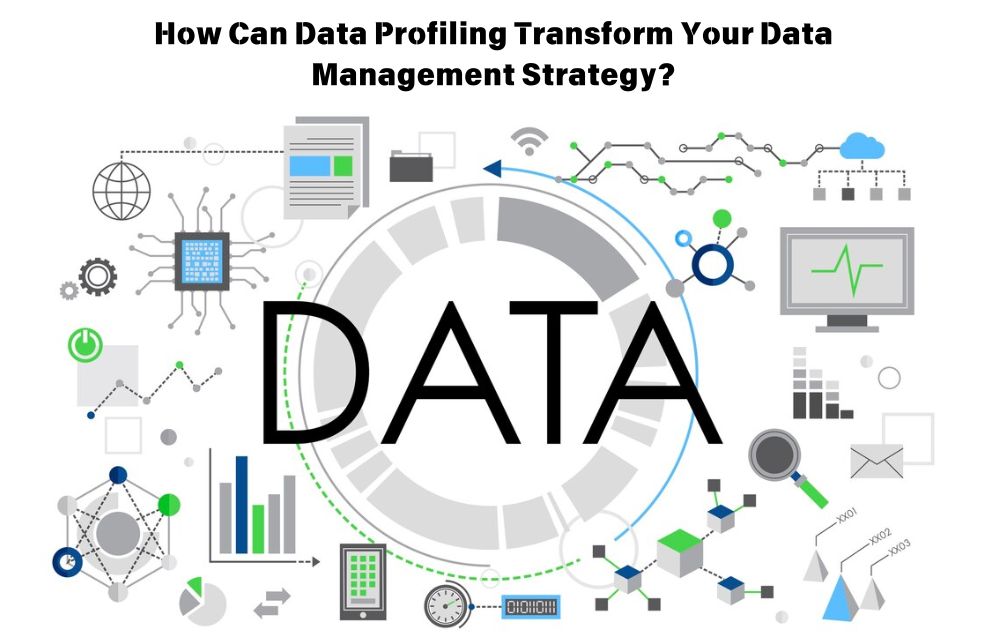Data profiling is the systematic process of examining, analyzing, and summarizing data to gain a clear understanding of its structure, content, and quality. It involves collecting statistical summaries and metadata about datasets to uncover patterns, anomalies, relationships, and inconsistencies. By providing insights into the state of the data, the profiling enables businesses to make informed decisions, streamline processes, and ensure data integrity.
In essence, this profiling helps answer questions such as:
- What types of data are present?
- Are there any missing or invalid values?
- What are the distributions of different variables?
- Are there relationships between different datasets?
The Importance of Data Profiling
This profiling is a foundational step in data management, particularly for tasks like data integration, migration, cleansing, and analytics. Without a clear understanding of the data, organizations risk basing decisions on incomplete, inconsistent, or erroneous information. Effective profiling improves:
- Data Quality: Identifying and resolving inconsistencies or inaccuracies.
- Decision-Making: Providing reliable data for strategic planning.
- Compliance: Ensuring data meets regulatory and organizational standards.
- Efficiency: Streamlining data processing workflows.
Read Also : What Is Data Curation and Why Does It Matter in Today’s Digital World?
Data Profiling Tools
Modern profiling tools automate much of the profiling process, making it faster and more accurate. These tools can handle large datasets, integrate with various databases, and provide visualizations to simplify data interpretation. Below are some commonly used tools:
1. Open-Source Tools
- Pandas Profiling: A Python library that generates detailed reports for pandas dataframes, including statistics, correlations, and missing values.
- DataCleaner: A lightweight tool for profiling and cleaning data, suitable for both technical and non-technical users.
2. Enterprise Tools
- Informatica Data Quality: Offers advanced profiling, cleansing, and monitoring capabilities for enterprise-grade applications.
- Talend Data Quality: Provides intuitive profiling features alongside robust data integration functionalities.
3. Cloud-Based Tools
- AWS Glue DataBrew: A cloud-native service for the profiling and preparation, integrated with other AWS services.
- Google Cloud Data Catalog: Combines data profiling with metadata management for seamless cloud operations.
4. Visualization-Oriented Tools
- Tableau Prep: Offers profiling capabilities alongside powerful visualization tools for exploring datasets interactively.
- Power BI: Includes profiling features that allow users to explore and clean data directly within the platform.
Data Mining vs. Data Profiling
While both data mining and profiling are essential in the realm of data management, they serve distinct purposes and employ different methodologies.
When to Use
- Use data profiling when preparing or validating datasets for analysis.
- Use data mining to extract actionable insights and make predictions based on data.
Data Profiling Techniques
1. Column Profiling
This technique involves analyzing individual columns in a dataset to understand their structure, content, and quality. Key metrics include:
- Minimum and maximum values
- Mean, median, and standard deviation
- Data type and length
- Frequency distribution
2. Cross-Column Profiling
Cross-column profiling identifies relationships and dependencies between different columns. For example:
- Key constraints (e.g., foreign keys)
- Functional dependencies (e.g., one value determines another)
3. Cross-Table Profiling
This technique examines relationships across tables in a database, such as:
- Referential integrity
- Join conditions
- Overlapping data points
4. Data Type Discovery
Identifies the types of data present in a dataset, ensuring consistency and compatibility.
5. Pattern Analysis
Analyzes patterns in data to validate formats (e.g., email addresses, phone numbers) or identify anomalies.
6. Anomaly Detection
Detects outliers or unexpected values that may indicate errors or fraud.
Data Profiling Process
This profiling process can be broken down into several structured steps to ensure thorough analysis:
1. Define Objectives
- Determine the purpose of profiling (e.g., cleaning, integration, analysis).
- Identify the scope and specific datasets to be profiled.
2. Collect Data
- Gather data from relevant sources, such as databases, spreadsheets, or APIs.
- Ensure that the data is accessible and permissions are in place.
3. Pre-Processing
- Clean the data by removing duplicates, irrelevant records, or inconsistencies.
- Standardize formats to simplify analysis.
4. Profile the Data
- Apply profiling techniques such as column profiling, cross-column profiling, and anomaly detection.
- Use tools to automate calculations and generate visualizations.
5. Analyze Results
- Interpret the findings to understand the state of the data.
- Highlight key issues, such as missing values, incorrect formats, or unexpected patterns.
6. Document Insights
- Summarize profiling outcomes in a report, including statistical summaries, detected anomalies, and suggested improvements.
7. Take Action
- Use the insights to clean, integrate, or transform the data.
- Address any issues identified during the profiling process.
Conclusion
Data profiling is a vital practice for maintaining data quality and ensuring reliable analytics. By leveraging powerful tools, employing robust techniques, and following a structured process, organizations can uncover hidden issues, validate assumptions, and prepare their data for strategic use. Whether you are integrating datasets, building predictive models, or ensuring compliance, this profiling lays the groundwork for success in the data-driven world.

